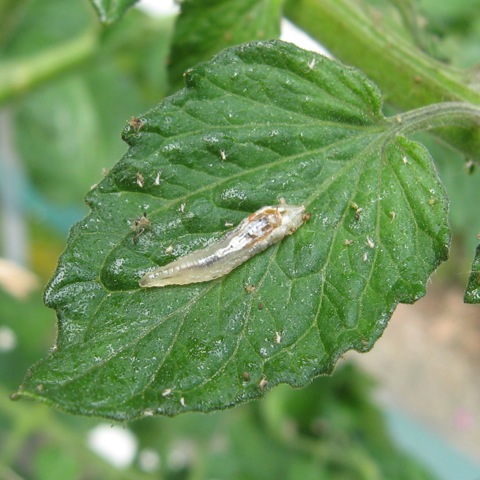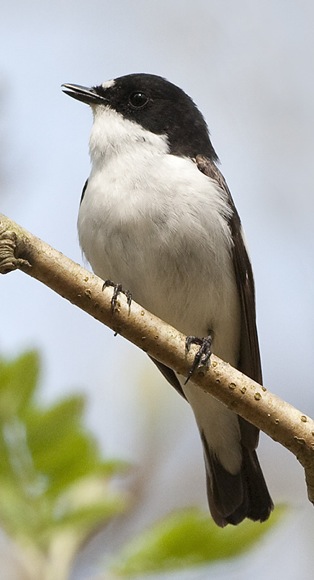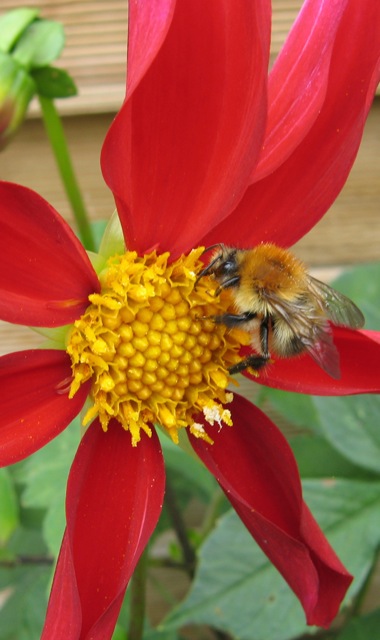No garden is an island: a thriving diversity of natives, neighbours and migrants will result in a healthy, vibrant growing community.
Right now the air is buzzing. It’s alive with chants for ‘Brexit!’, calls for ‘Remain!’, and voices mulling whether to leave, or whether to stay. Are we better off in, working side by side – or out, cut triumphantly adrift and ‘free’ to do our own thing? Should we stay, or should we go? Keep them out, or let them in? Work it out, or walk away? #VoteRemain and work together, or #VoteLeave and be ‘great’ again? This is the overpowering flavour of the increasingly febrile, often rancorous media airwaves, where real, joined-up and honest debate around whether the UK should remain part of, or leave, the European Union has been all but trampled to dust.
But there is other, fresher air that’s also buzzing right now. Buffeted by summer’s rising warmth, it’s filled with birdsong, the hum of insects, and so much other raw, wild life. There’s no ‘in’ or ‘out’ hostility here. Breathe your garden’s ebullient air deeply, and rejoice.

I may have imagined it, but as May morphed into June, I’m sure I’ve felt the full yet gentle force of nature in my garden more keenly than ever. Its momentum grows daily. A dearth of overwintered calendulas, which usually attract bug-eating insects in spring, left plants at the mercy of vanguard aphids (last year I never got to pot any calendulas up, and a semi-submerged Welsh winter drowned the self-seeders). I held firm – a bit of squishing was ample to quell swelling colonies – and then they arrived, fresh from their winter slumbers on a warming breeze: hoverflies. Within days these aphid-munching marvels had laid their eggs, which hatch to snot-like larvae, next to every aphid stronghold in sight, and the larvae are now hoovering them up like there’s no tomorrow. Hot on their heels were tiny parasitoid wasps – and fat green aphids turned to bronze after being eaten alive from the inside out by their larvae, injected into them as murderous eggs. I couldn’t even see them coming.
This is my kind of gardening: working side by side with, and trusting in, nature to solve ‘pest’ problems, even if patience is sometimes required. These hoverflies and wasps, and now the blue tits that harvest aphids to feed their plump chicks, pass freely across and through my garden’s ‘border’ – a chestnut paling fence, doubling right now as a raw material for nest-building wasps. I wouldn’t dream of keeping any of this wild life out; my garden and nature are definitely, intrinsically, better and stronger together. I want this wildlife in, not out.

But in other gardens, things are often very different. One squirt from an ‘easy to use’ garden bug spray – quite possibly one containing a polluting, bee-harming neonicotinoid – will certainly kill aphids, and everything else besides. To use a garden pesticide is to declare that your garden is an island. It must be defended at all costs using ‘weapons’ from an ‘armoury’ stocked, conveniently, by shops and garden centres, and promoted, still, by some gardening magazines, and by ossified pro-chemical pundits. Never mind relying on peaceful, pollution-free help from your neighbours in nature; there be aphids, and your plants must be ‘protected’ come what may. Zap! Pest, predator, good and bad bugs, not to mention collateral casualties: all are gone in the squeeze of a trigger when we decide that a patch is better off outside of nature, vote to leave its benefits behind, and fail to see that gardening is part of something far bigger. ‘Beware poisoned food’ doesn’t cut it for the blue tits; they can’t read. Never mind the neighbours, whatever their species – we’ll do as we please, and spray any irritating blighters with whatever we want.
Working together with our European neighbours has been good for nature, especially for bees; they’ve been protected from several ‘neonics’ – the nerve agent insecticides that send them doolally – by EU environmental protections that the UK’s ministers (not to mention pesticide lobbyists) fought tooth and nail against. There’s strength in sharing knowledge and pooling research, and in numbers. It’s this togetherness that might actually bring an end to the destructive mining of peat bogs across Europe. Just think: a whole continent going peat-free. We know modern and earth-friendly peat-free composts work – for gardeners and for growers – so all we need now is the collective will to ensure they’re used to fill all of our trays and plant pots.

Alongside my blue tits, welcome migrants are also in the air. Some from West Africa are flitting excitedly in black and white under the fly-rich oak boughs, their plump young verging on first flight. Pied flycatchers have made their summer nest-box home here for the second year running, bringing a dash of acrobatic joy to June’s lengthening days. They give far more than they take. Other migrants make long, perilous journeys through Europe’s skies to enjoy our brief, insect-rich summer. The sweet, distinctive calls of willow warblers and chiffchaffs are spring’s overture here, soon joined by the wood warbler’s mesmeric zip, zip, zip, zip, zip, zip, zip, zip. And I’ve everything crossed that I’ll soon be spellbound when a hummingbird hawk moth, another seasonal immigrant, alights here on sun-soaked slate after hovering over the bedstraws. There are no in-flight border checks for these migrants (they can’t read ‘keep out’ signs). They add to nature’s borderless diversity, and help to enrich our dulled, ‘in or out’, monochrome lives.
The opinion poll in my garden is clear. As our ecological outlook becomes ever more uncertain and precarious, people, gardening and nature are now, more than ever, better together.
Text and images © John Walker. Pied flycatcher image Mark Medcalf/Wikipedia.
Find John on Twitter @earthFgardener










